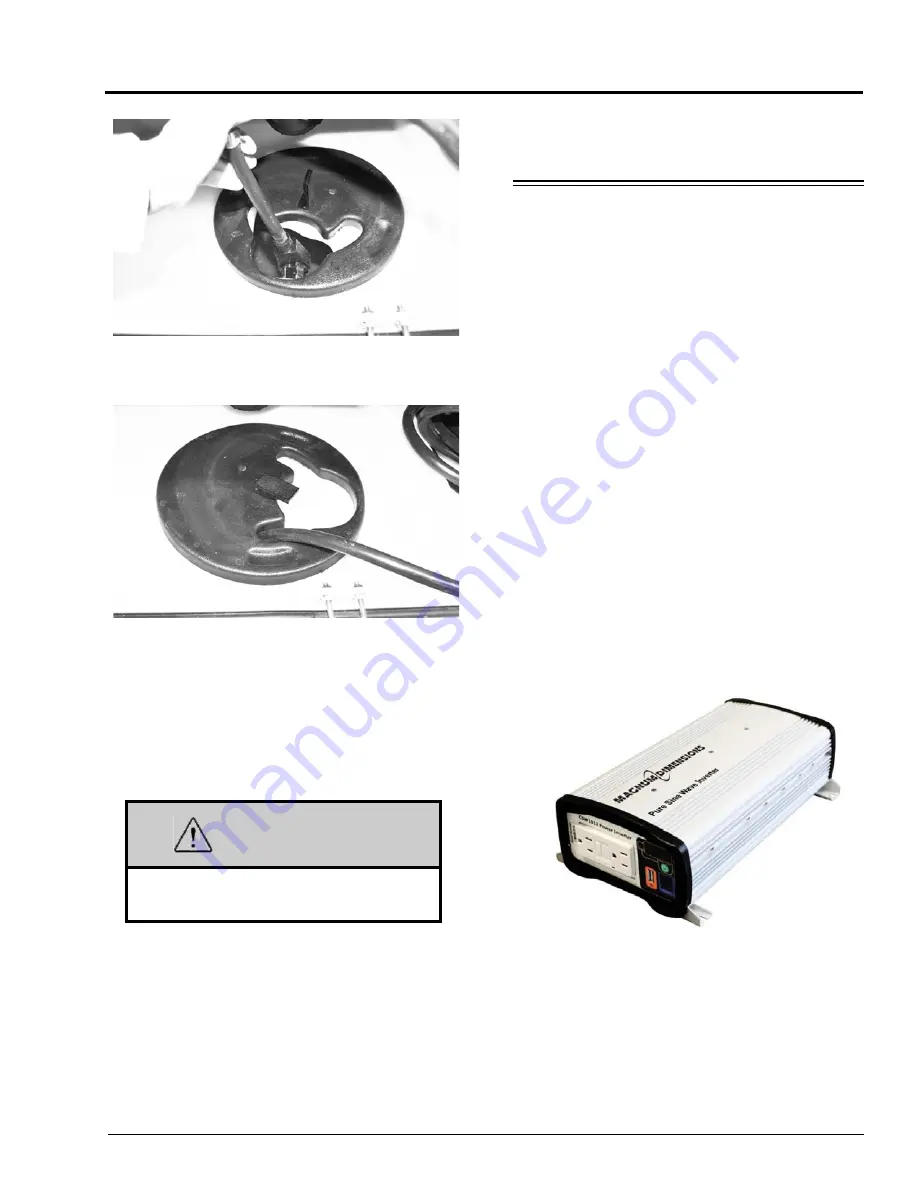
6-3
SECTION 6 -
ELECTRICAL
3. Then rotate to the smaller opening to enclose
the cord.
The power cord is designed to ground the
electrical system through the receptacle. It is also
designed to carry the amperage output of most
campground outlets. If the electrical receptacle to
be used is designed to mate with the three prongs
on the power cord plug, the electrical connection
can be expected to carry rated load.
Park Fuses or Breakers
Most campgrounds are equipped with a fuse
or circuit breaker at the receptacle (which we
recommend shutting off before engaging or
disengaging the power cord.) This protects the
park’s wiring, as well as the power cord on your
vehicle from electrical damage. If electrical
power fails, contact the park attendants and have
them check the fuse or breaker for your supply
receptacle.
INVERTER UNIT – 1000W
The inverter changes 12-volt DC battery
power into 120-volt AC power for use by 120-
volt AC equipment inside the motorhome. The
inverter unit is located inside an interior cabinet.
NOTE: Batteries will deplete with use of the
inverter.
Monitor battery levels regularly when
not connected to shoreline or generator
power.
The inverter can also be used while
driving the motorhome because the
engine alternator will charge the
batteries while driving.
The inverter has built in GFCI protection. The
GFCI will protect against electrical shock by
interrupting the flow of electricity. If there is no
power from the inverter the GFCI may have
tripped. Reset the GFCI by pressing the RESET
button. If the GFCI continues to trip, have the
electrical system checked and repaired, if
necessary, before using the inverter again.
WARNING
Service inlet access must be closed when
utility connections are not in use.
Inverter Unit
(Located inside an interior cabinet)
-Typical View





































